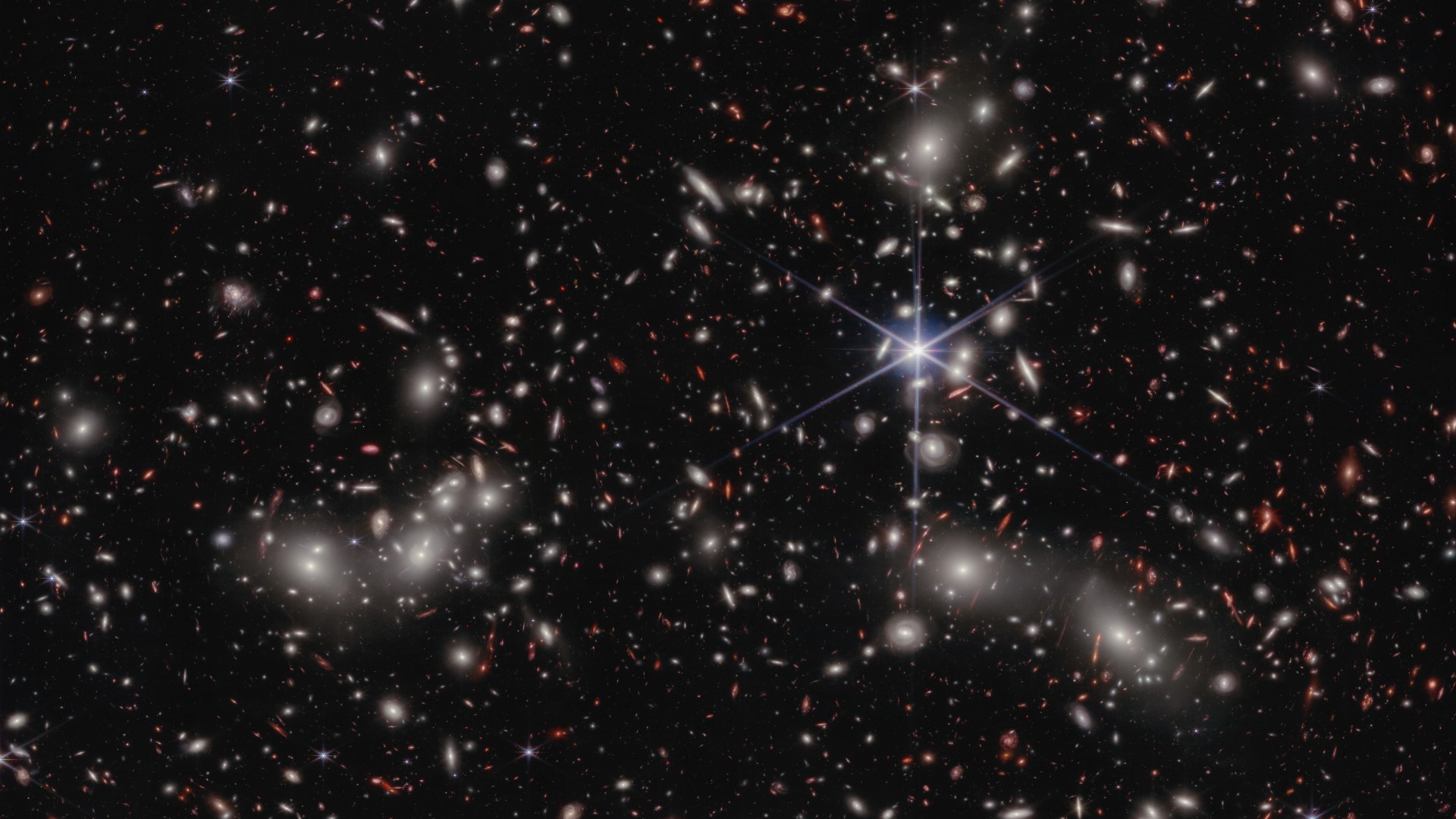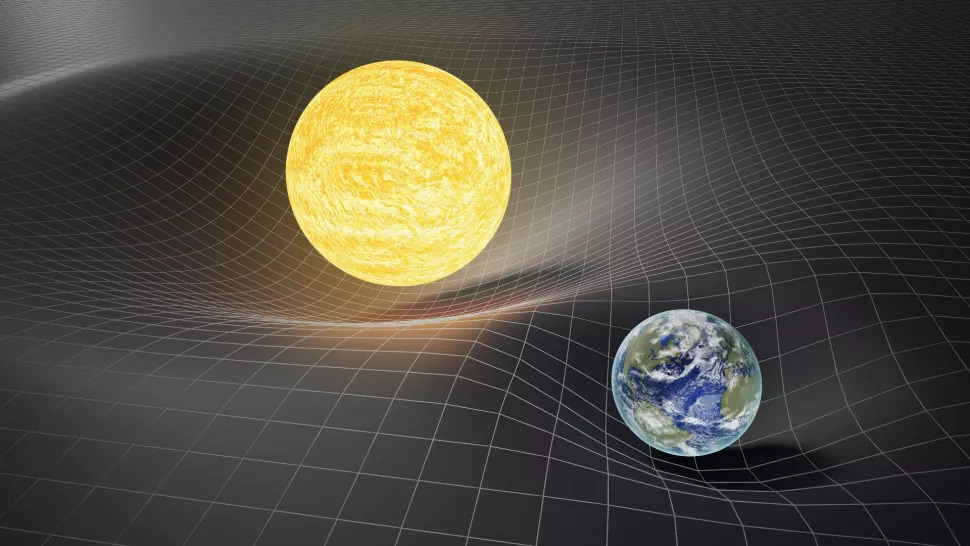James Webb Space Telescope opens Pandora's Cluster in stunning image with help from Einstein (video)
The powerful space telescope was able to see three clusters of galaxies in the region, also known as Abell 2744, merging to form a "mega cluster."
In Greek mythology, Pandora's curiosity leads her to open a container that releases all of the evils and hardships that now exist in the world.
Let's hope the James Webb Space Telescope (JWST) didn't do just that as it zoomed in on a region of space called "Pandora's Cluster" using a phenomenon predicted by Einstein in 1915. The new JWST image reveals previously hidden details from the region and the merger of three already massive clusters to create an even larger "mega cluster" of galaxies.
The nickname for this region, formally known as Abell 2744, of Pandora's Cluster arises from the observation of an assortment of different structures within it. Yet, only the central core of this region of space has been studied previously by the Hubble Space Telescope, meaning plenty of secrets were left undiscovered when the JWST turned its powerful infrared instruments to the area.
Related: NASA's James Webb Space Telescope: The ultimate guide
The JWST team looked at Pandora's Cluster using the powerful telescope's Near-Infrared Camera (NIRCam) and the Near-Infrared Spectrograph (NIRSpec) instruments as part of the Ultradeep NIRSpec and NIRCam ObserVations before the Epoch of Reionization (UNCOVER) program. The deep field image that resulted from this takes four JWST "snapshots" and stitched them together. This created one panoramic image featuring a stunning 50,000 sources of infrared light.
This led to a deep-field image of Pandora's Cluster, located around 3.5 billion light-years away, that achieved an impressive balance of breadth and depth that could revolutionize the study of galactic evolution.
Prominent in the image is a bright star foreground star from the Milky Way with distinctive diffraction spikes created by the JWST. Around this are bright sources of white light that are surrounded by a hazy glow; these are the much more distant galaxies of Pandora's Cluster.
Breaking space news, the latest updates on rocket launches, skywatching events and more!
Though human-created technology is essential to the observation of this cluster of clusters, astronomers also relied on a natural phenomenon first revealed by Albert Einstein in his 1915 opus, the theory of gravity known as general relativity.
Einstein provides the key to opening Pandora's Cluster
General relativity predicts that objects of mass have an effect on the very fabric of space, warping it. This is analogous to placing objects on a stretched rubber sheet and creating dents in the sheet. Just like balls of increasing mass would create larger, more extreme dents in that sheet, cosmic objects of tremendous mass create large warps in the fabric of space. This curvature can be so extreme that as light passes it, its path is also curved.
That means if light from a background object passes a body of extreme mass in the foreground as it travels to Earth, the background object can appear to have shifted position in the sky. This gravitational lensing effect can have other consequences too. Sometimes the foreground mass object or "lensing object" can actually help amplify the light from background objects.
This amplification helps the already powerful JWST see the light from distant and therefore early galaxies that without lensing may be too faint to observe. The lensing can also distort background objects, stretching them like cosmic taffy as a result of their light taking different paths with different travel times around the lensing object. This distortion helps astronomers determine which galaxies are in the foreground and which are in the background.
An example of this can be seen in the new JWST image of the patch of the sky including Pandora's Cluster. In the lower right of the image are hundreds of distant strongly lensed galaxies appearing as arcs of light. These galaxies have never been seen before, even by Hubble.
The image was created when NIRCam captured Pandora's Cluster with exposures lasting between 4 to 6 hours and a total of 30 hours of observations. These observations will now be followed up by an analysis of the region using NIRSpec, which will provide detailed measurements of distances within the cluster and details about the composition of its constituent galaxies.
This new data, set to be revealed this summer, should reveal entirely new insights into how galaxies came together in the early universe and how they evolved to form the cosmos we see around us today.
Follow us on Twitter @Spacedotcom or on Facebook.

Robert Lea is a science journalist in the U.K. whose articles have been published in Physics World, New Scientist, Astronomy Magazine, All About Space, Newsweek and ZME Science. He also writes about science communication for Elsevier and the European Journal of Physics. Rob holds a bachelor of science degree in physics and astronomy from the U.K.’s Open University. Follow him on Twitter @sciencef1rst.


